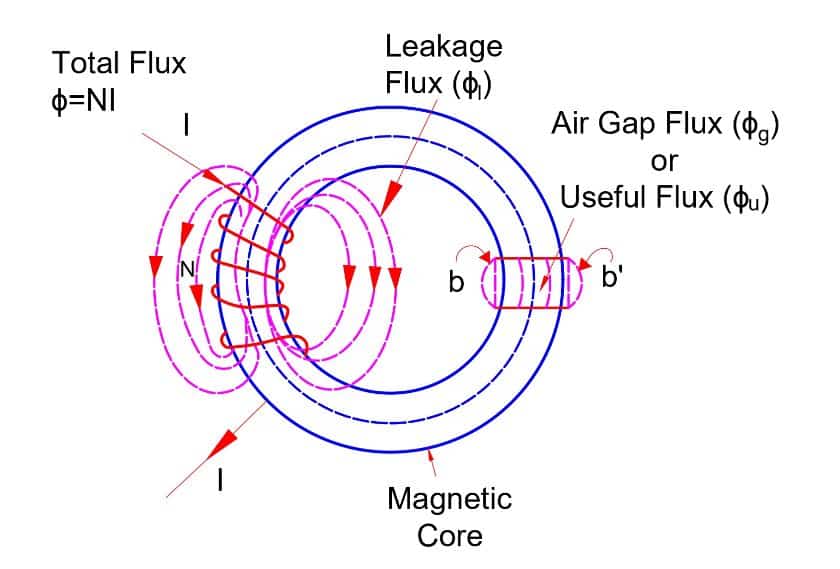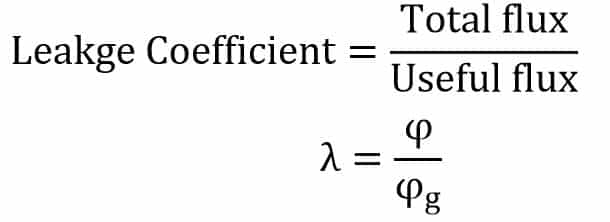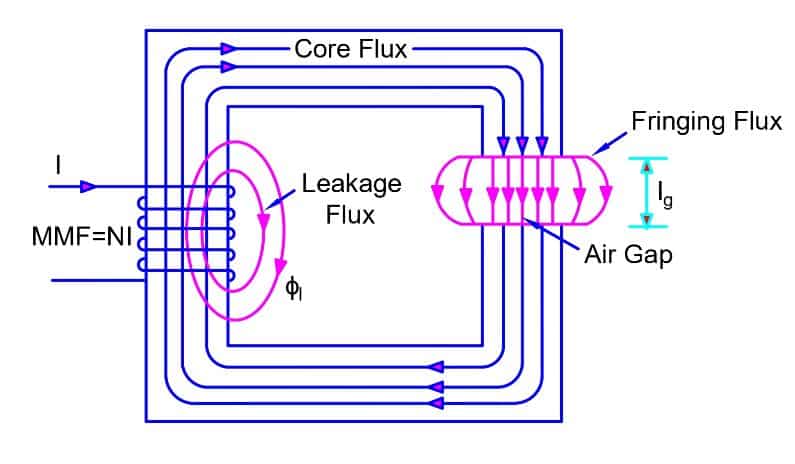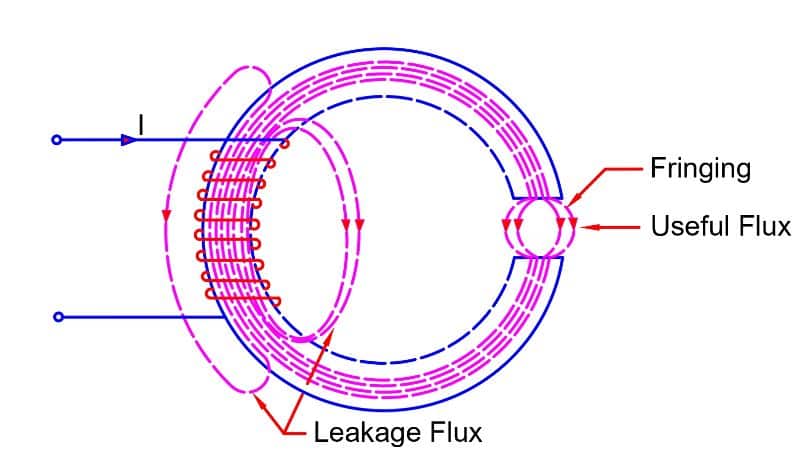Leakage flux is the flux that leaks from the magnetic circuit. All the magnetic flux produced does not flow in the magnetic circuit, and some part of the flux leaks from a magnetic core. It is practically not possible that whole the flux flows in the magnetic circuit without any leakage. In this post, we will discuss in detail what is leakage flux & fringing.
Magnetic Leakage or Leakage Flux
We can easily understand what is leakage flux & fringing by taking the example of the solenoid coil.

The flux in the air-gap is the useful flux(φg). The more the flux in the air gap, the more useful flux. The leakage flux that does not do any useful work in the magnetic circuit is the leakage flux(φl). Thus, the total flux(φ) in the magnetic circuit is the sum of the leakage flux(φl) and the air-gap flux(φg).

Example:
φ= φl + φg
φg= φ– φl
= 0.5 – ( 0.01 x 0.5)
= 0.5 – 0.005
φg = 0.495
Leakage coefficient

From the above example, the leakage coefficient is
λ = φ/φg
= 0.5/0.495
λ = 1.01
If the leakage flux coefficient is equal to unity, it shows that there is no leakage flux in the magnetic circuit. The leakage coefficient 1.01 shows that there is a 1% leakage flux.
The higher leakage coefficient shows that there is more leakage flux in the magnetic circuit.
Magnetic Flux Fringing
The reluctance of the magnetic circuit changes when the flux travels from the magnetic circuit to air and again air to the magnetic circuit. This variation in the magnetic reluctance causes the magnetic flux to bulge in the air gap area. This phenomenon is known as Fringing.

When magnetic flux lines pass through the air gap the lines of force repel each other & as a result, the flux density in the air-gap decreases.
The useful flux when set up in the air gap, it tends to bulge outward at (b and b’) as shown in the above figure, because of this bulging, the effective area of the air gap increases, and the flux density of the air gap decreases. This effect is known as Fringing.

The fringing causes a reduction in the magnetic flux density in the air gap. For example- If flux density in the magnetic core is Bc and Bg respectively, then the Bg is always less than Bc. The reduction of flux density in the air gap happens because of the fringing effect.
Fringing effect increase with an increase of air-gap length. Fringing is directly proportional to the air-gap length.
Thus we can say that the flux density in the air gap reduces with ;
- Increase of the air-gap length- This cause more fringing effect
- Leakage flux in the core.
Read Next: